Step 1: Build the Circuit
In step 1 we were supposed to build a circuit that would control the stepper. It was a challenge for me because the diagram that was presented was not to clear to me. I ended it up not connecting the H bridge correctly to the ground. And I struggled to get the 5v into all the ports that needed to get it. With some help and some understanding, I was able to motor making smooth revolutions.
Step 2: Control rotation with a potentiometer
As I added the potentiometer, I added some cables to allow the potentiometer to have an influence on the motor. As I was coding I struggled a bit trying to map it and change the steps from 100 to 200, but eventually, I got the code. The movement of the knob and the rotation of the motor got matched.
Step 3: Build a Drawing Machine!
By the time I got to the third step, recitation had ended. Nevertheless, one girl that had not finished and I stayed to finish it. We collected the materials and put both of our Arduinos on the plaque. We ran the program and with the help of our potentiometers and our motors, we started drawing on a paper.
Question 1:
What kind of machines would you be interested in building? Add a reflection about the use of actuators, the digital manipulation of art, and the creative process to your blog post.
Well based on today’s drawing machine I thought of the people that had Parkinson or that did not have an arm to write in a physical paper. It could be useful to build a machine that had voice recognition and after would start writing the desired words on paper, this way helping people that are unable to write on paper. Of course, there are other technologies that facilitate this, for instance, dictating words to a device and later printing it. Nevertheless, I think building the voice recognition writer would be cool. The actuator would be the stepper motor. Creating this machine could allow people to express themselves and create art by writing poems songs etc.
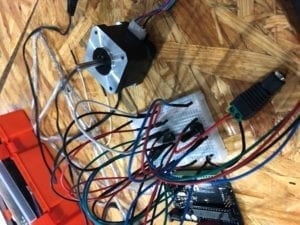
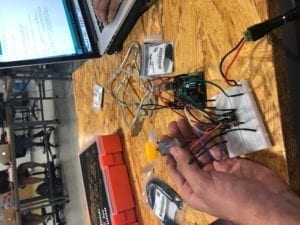
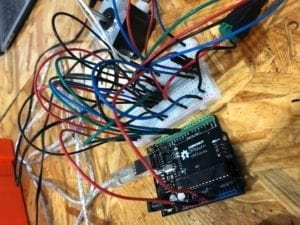
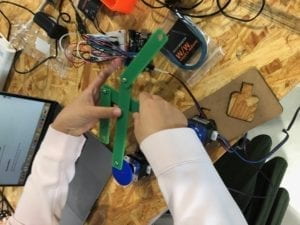
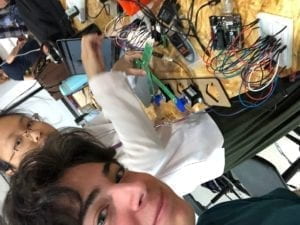
Question 2:
Choose an art installation mentioned in the reading ART + Science NOW, Stephen Wilson (Kinetics chapter). Post your thoughts about it and make a comparison with the work you did during this recitation. How do you think that the artist selected those specific actuators for his project?
An installation from the ART + Science NOW, Stephen Wilson (Kinetics chapter) that I thought was particularly interesting was Daniel Rozin Wooden Mirror. I saw that the installation works with relatively basic materials. I recognized servo motors, control electronics, video cameras, computers, wood frames. I thought it was interesting that the project we made on recitation has some materials in common. For instance, it has coding, a motor, a computer, wood and puts together natural objects such as wood, with technology. I think the author made a combination of technology and natural material on purpose. So the actuator would be the servo motor, the magnetic field, and the cameras.